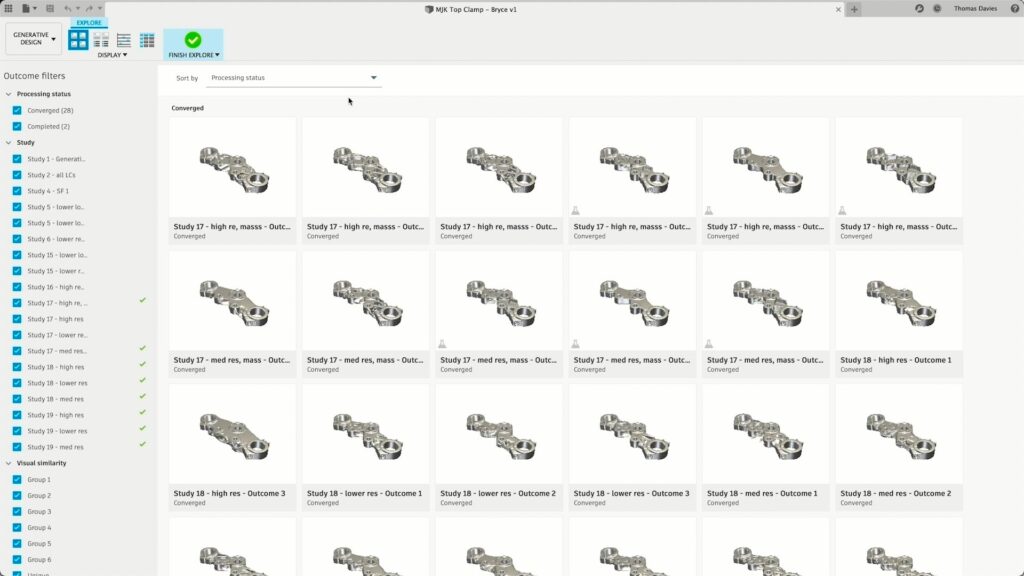Generative design is significantly influencing the process of product development in various ways:
1. Increased Design Efficiency: By generating multiple design solutions that meet specific criteria in a short amount of time, generative design speeds up the design process. Designers can evaluate a broad range of options quickly and focus on refining the most promising ones.
2. Optimisation of Designs: Generative design uses algorithms and AI to optimise designs based on set parameters like weight, strength, cost and more. This leads to high-performing, efficient and innovative products that may not have been conceivable through traditional design methods.
3. Material Efficiency: Generative design can provide solutions that use less material but still maintain the required strength and performance. This not only reduces cost but also supports sustainability goals.
4. Enhanced Customisation: Generative design allows for a higher level of customisation in product development. It can generate designs tailored to specific needs or customer preferences, opening the door to personalised products on a larger scale.
5. Integration with Advanced Manufacturing: Generative design is often used in conjunction with additive manufacturing (3D printing) processes. The complex and organic shapes that generative design algorithms often produce are well-suited to these manufacturing methods, which can create shapes that are impossible with traditional manufacturing techniques.
6. Reduced Time to Market: By accelerating the design process and improving the integration between design and manufacturing, generative design can help companies get their products to market faster.
7. Risk Mitigation: By exploring a wide design space and testing various scenarios digitally, generative design can help identify potential design issues early, reducing risk and cost in the product













